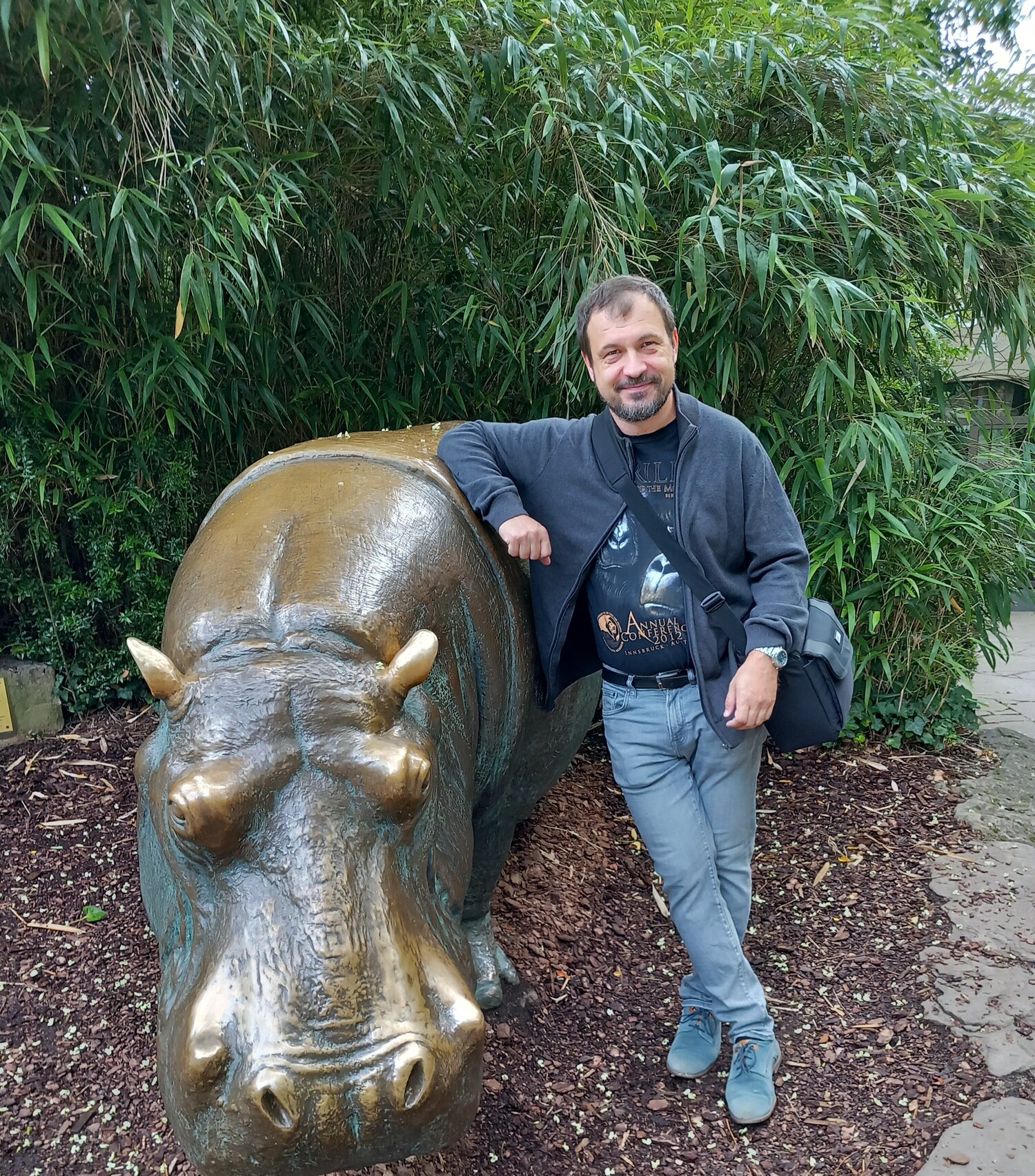Foto: © Jan Pluháček
The IUCN (International Union for Conservation of Nature) is one of the world’s leading organizations for conservation and plays a central role in the protection of hippos, including pygmy hippos and common hippos. Through its Hippopotamus Specialist Group, which is part of the Species Survival Commission (SSC), the IUCN coordinates global efforts for the conservation of these species. The Specialist Group consists of international experts who specialize in the research, monitoring, and protection of hippos. Through its work, the IUCN combines scientific expertise with practical measures and policy initiatives to ensure the long-term protection of hippos and their habitats. We spoke with Dr. Jan Pluháček (Co-chair of the Hippo Specialist Group IUCN/SSC) who is based in Olomouc Zoo, Czechia.
Die IUCN (International Union for Conservation of Nature) ist eine der weltweit führenden Organisationen für den Naturschutz und spielt eine zentrale Rolle beim Schutz von Flusspferden, einschließlich Zwergflusspferden und gewöhnlichen Flusspferden. Über ihre Hippopotamus Specialist Group, die Teil der Species Survival Commission (SSC) ist, koordiniert die IUCN weltweite Bemühungen zur Erhaltung dieser Tierarten. Die Fachgruppe besteht aus internationalen Experten, die sich auf die Forschung, Überwachung und den Schutz von Flusspferden spezialisiert haben. Durch ihre Arbeit verbindet die IUCN wissenschaftliche Expertise mit praktischen Maßnahmen und politischen Initiativen, um den langfristigen Schutz der Flusspferde und ihrer Lebensräume sicherzustellen.
(deutsche Version weiter unten)
